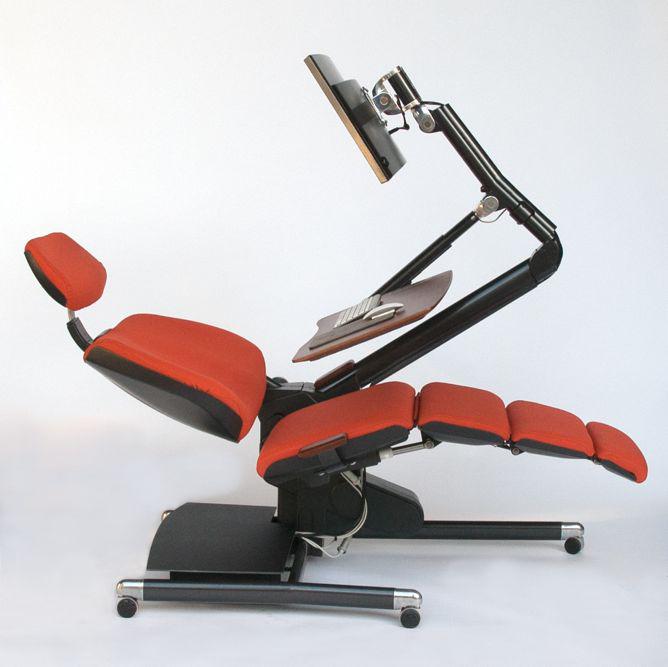Here are nine office-related innovations covered on the Eye that were designed to improve our work lives in 2015.
The Standing Desk Is Over. Now You Can Work Lying Down in a Dentist’s Chair.
While the laptop-huddled masses obsess over various iterations of the standing desk workstation as a way to steal back precious moments of a lifespan that we have been told is cut short by too much sitting, 2015 saw the introduction of the Altwork Station (above), a dentist chair–like computer workstation engineered so that you can sit, stand, or toil away in a supine position with your computer monitor, mouse, and keyboard hovering securely overhead.

Photo by Hufton+Crow
The Cycle-In Office, a Bike Commuter’s Dream
Urban capitals like London are working to make biking a transport and commuting option of choice for a more sustainable future. Architects and designers are joining the effort with innovations like London’s first “cycle-in office.” Workers at the recently revamped and renamed Alphabeta building—originally three individual structures constructed between 1910 and 1930—can enter their workplace directly from the street via a ramp that takes them to the basement of the building, where secure storage for more than 200 bikes plus adjacent changing rooms and lockers await.
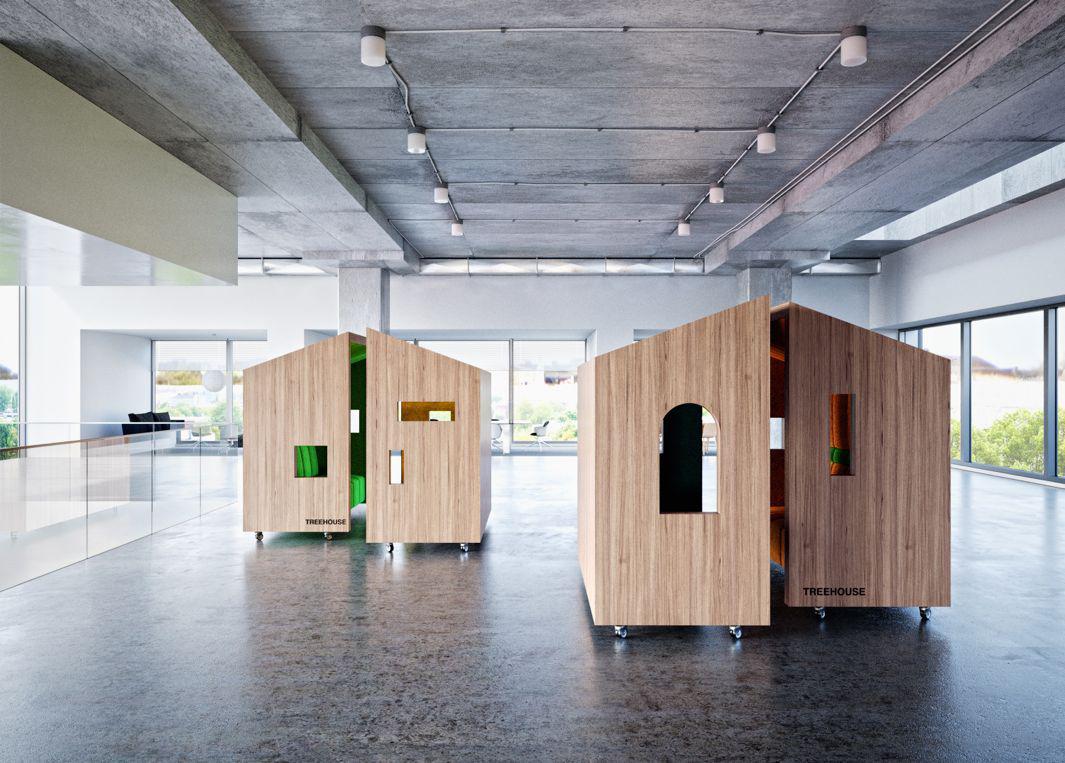
Courtesy of Dymitr Malcew
Treehouse-Inspired Office Pods
Would work be more bearable if your cubicle looked like a treehouse? Singapore-based architect and designer Dymitr Malcew has created a series of treehouse-inspired modular office pods that offer respite from distracting views, noise, and abundant light of the modern open-plan office or co-working space. The design has a work-as-play vibe that’s in keeping with the 21st-century office aesthetic—and would also make a splendid reading nook or Web-surfing oasis in a giant loft space for those with too much real estate on their hands.
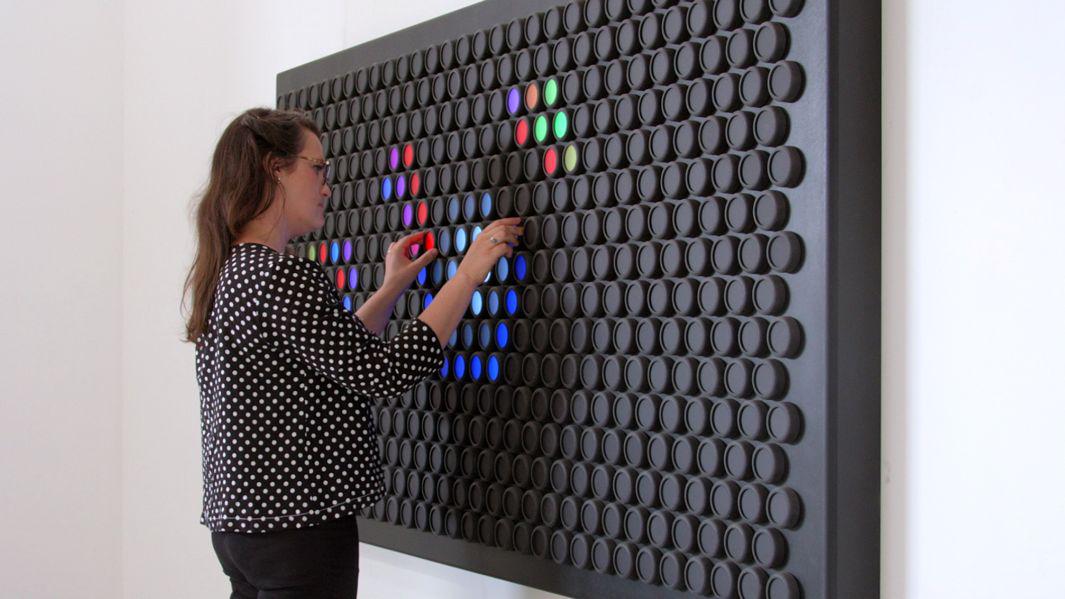
Courtesy of Hero Design
Every Office Needs This Giant, Interactive Lite-Brite for Grown-Ups
Anyone who has a sensory childhood memory of making endless light-peg designs with a Lite-Brite will find himself instantly transfixed with Everbright, an interactive LED-lit board inspired by the original toy from San Francisco–based Hero Design. Unlike Lite-Brite’s pegs, the Everbright has 464 color dials that can be turned to any color of the rainbow. While the product targets businesses on the merits of the oversized toy as a team-building exercise and corporate creativity booster, head designer Alan Rorie said that the design was the idea of Jen Quan, a client who founded a children’s playspace and wanted to include a large-scale Lite-Brite.
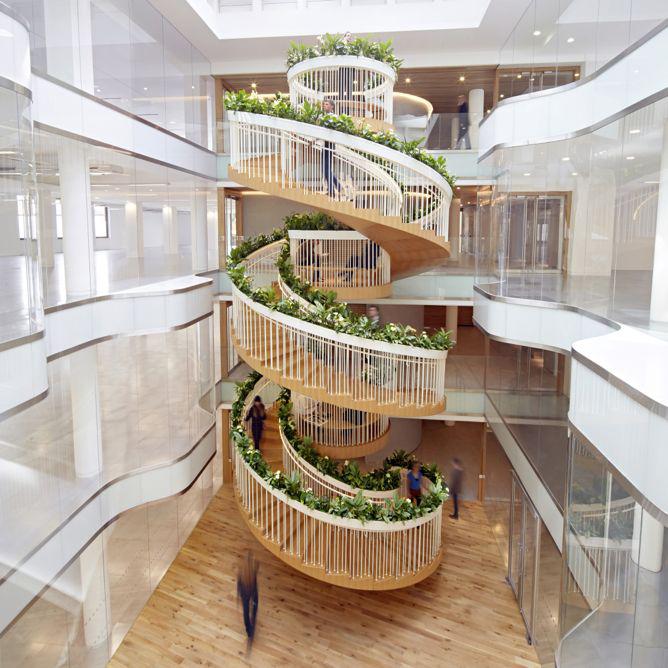
Photo by Mark Cocksedge
A Monumental Living Staircase to Bring Nature Indoors and Encourage Human Interaction
Acclaimed London designer Paul Cocksedge completed the “Living Staircase” at London’s renovated Ampersand building designed as the sculptural epicenter of the office portion of the landmark mixed-use building. A 41-foot-high spiral staircase made of steel and American white oak connects four floors, with a planted balustrade to make trudging up stairs feel more like a walk in the park. In place of a central load-bearing pillar at the heart of the staircase, Cocksedge incorporated zones built into each level that invite employees to read, gather, or have a tea break (with mint grown on the balustrade, he suggests). And, it seems likely, engage in a little after-hours office romance.

Screenshot courtesy of Moo
Business Cards Reinvented for the Digital Age
Online print and design company Moo is attempting to reinvent the old-school business card for the digital age with Business Cards Plus, printed business cards embedded with near-field communication chips that turn them into launch pads for your online portfolio, social media channels, company app or website, music demo, or anything else you want people to see online. Now the lucky recipients of your business cards don’t even need to wear themselves out typing your name into a search box to find out more about you. Each card is printed on high-quality paper with an embedded NFC chip that launches a preprogrammed URL when held up to an NFC-enabled smartphone.
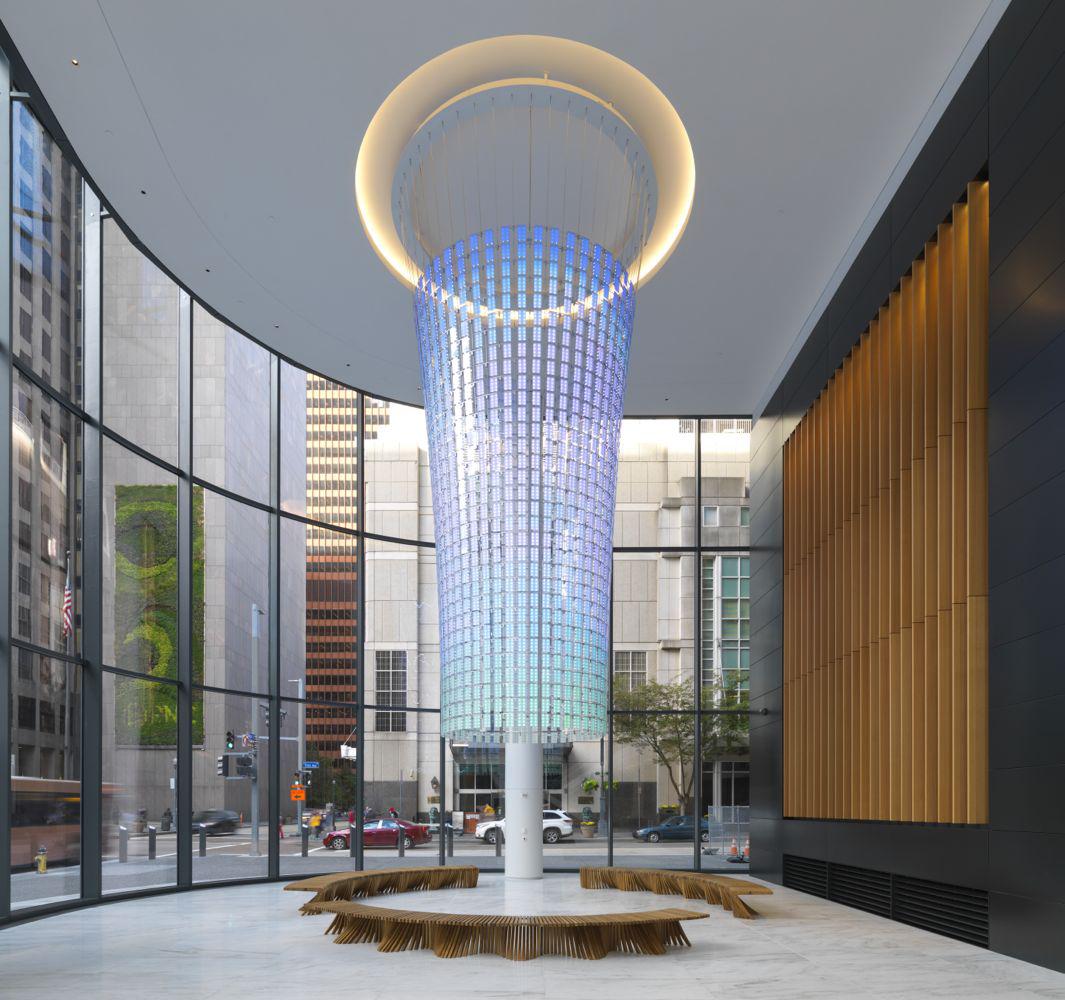
Copyright Andy Ryan
A New Pittsburgh Office Tower Uses Lighting Design to Broadcast Its Green Credentials
Yet another new building claiming to be the world’s greenest, the Tower at PNC Plaza, the new corporate headquarters for PNC Bank in Pittsburgh, might look like just another bank tower from the outside, but it was designed to exceed LEED Platinum certification—the U.S. Green Building Council’s highest certification rating—with such features as a double-skin façade and a solar chimney that the company projects will allow the tower to consume 50 percent less energy and 77 percent less water than a typical office building. In order to broadcast and monitor those green ambitions in an interactive fashion, New York City–based ESI Design built the Beacon, an innovative 30-foot tower in the lobby that interacts with building sensors to gather performance data and uses light, color, text, and sound to communicate real-time metrics like energy use, water consumption, and recycling, how much waste is being diverted from landfills, and how the building is utilizing sunlight and fresh air to reduce its reliance on fossil fuels.
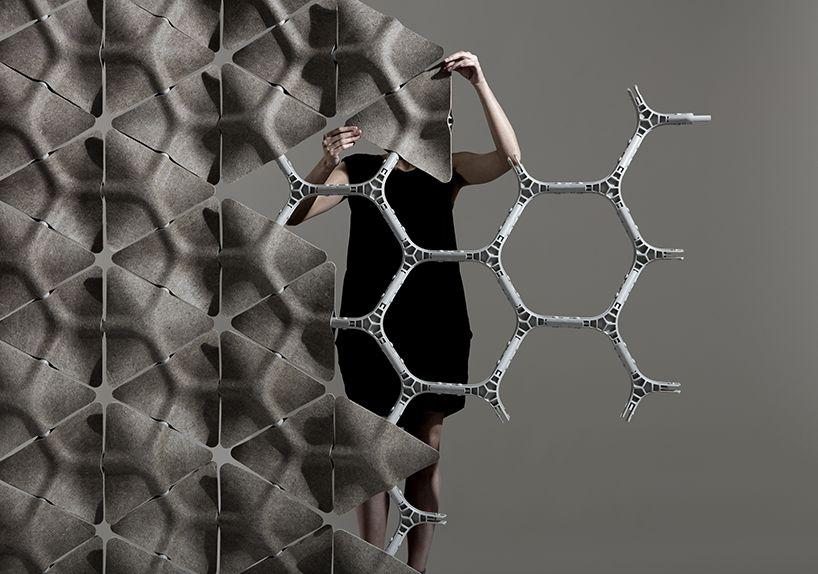
Courtesy of Layer
A Hemp-Based Barrier Against Office Noise Pollution
One of the most egregious downsides of the modern open-plan office is its lack of thoughtful acoustics, and designers are increasingly turning their attention to the invisible scourge on productivity and well-being that is too much concentration-busting noise. London-based Benjamin Hubert’s Layer design has created a new modular acoustic stand-alone noise-busting solution made from sustainable materials that can be integrated into an office environment without modifying existing architecture. Unlike most acoustic partition systems, Scale for Australian textile design company Woven Image doesn’t require installation, tools to assemble, or even instructions. Conceived as a flexible, out-of-the-box solution, Scale uses a system of 13-inch by 2-inch pressed recycled hemp acoustic tiles that attach to an injection-moulded recyclable thermoplastic framework that you can clip together and attach to recycled aluminum base plates using magnets, requiring nothing but your intuition and bare hands.
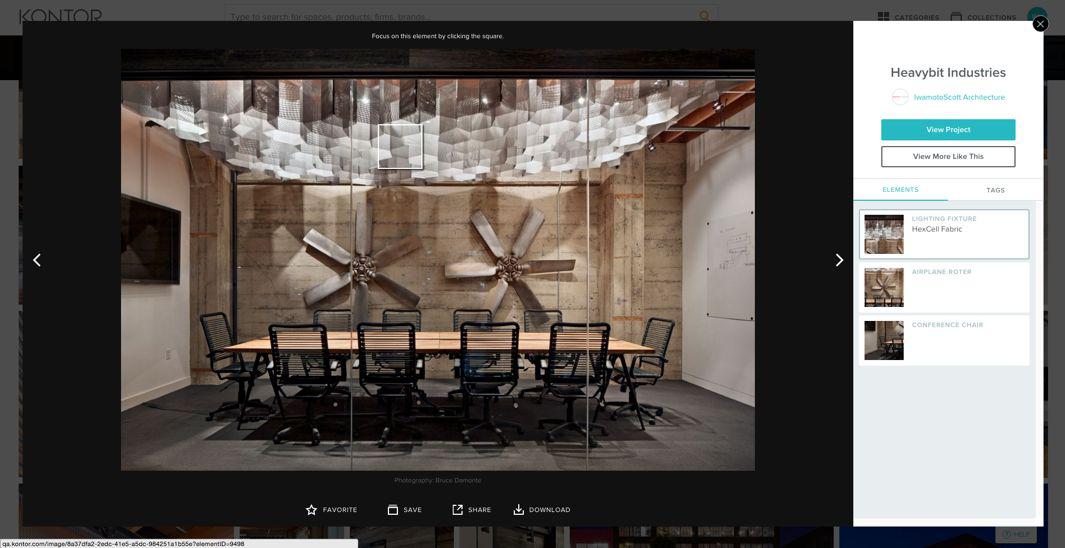
Courtesy of Kontor
A New Online Visual Hub for Office Design
Are you reading this from your shabby-looking office? Do you sometimes fantasize about how much better your work life would be if your office was a well-designed space? Kontor (a Scandinavian word for office) is a new online network that is hoping to be a go-to destination dedicated to workplace design that is more than a safe-for-work portal for corporate-design porn, connecting companies aware that building better office space is a key to attracting and keeping talent with the architects, interior designers, and products to make it happen. There’s plenty of eye candy for those who are into office design. But Kontor includes a searchable database and has loaded its images of inspiring workplaces with metadata that allows you to access detailed product information like pricing and dimensions as well as information about architects and designers, all from the context of a finished room.
